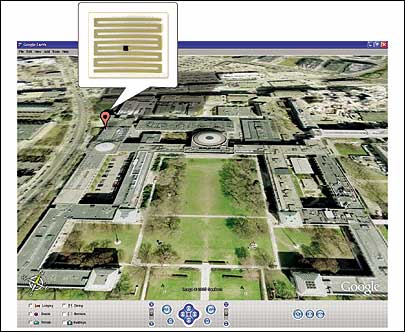Deep in the hallowed halls of the Massachusetts Institute of Technology (MIT), in an office cluttered with computer equipment, leather-bound books and academic paraphernalia, John Williams excitedly shows off a demo of the future. Williams is an associate professor and director of the Intelligent Engineering Systems Laboratory at MIT and the director of MIT’s Auto-ID Lab, the successor to the Auto-ID Center, which developed the concept and prototypes for Electronic Product Codes and EPC network infrastructure. Auto-ID Labs around the world continue to do primary research in support of the evolution of EPC technologies.
Hunched over an ordinary laptop computer, Williams demonstrates how he can home in on an EPC tag interrogated in a building on the MIT campus. He pulls up a map of the northeastern United States from a database hosted by the U.S. Geological Survey (USGS) to show the region where the tag was read. The demo seamlessly presents other maps from different databases on the Web, including Google Maps, until he finds the building. “If you have the architectural drawing of the building in a database,” he says, “you could actually drill down to a particular shelf in a store or in a hospital operating room.”
If the demo seems like a far-fetched futuristic scenario, it’s not. The only thing Williams simulated was the tag read. The seamless merging of maps from various databases is real. He built the demo using Web services-a standardized set of interfaces that allow application-to-application communication over the Web. Williams believes EPC’s real value won’t be simply the ability to look up product information online. Instead, it will deliver big benefits to companies through the ability to combine this data with many other data sources, using Web services.
Companies might map EPC data from purchases in stores in specific regions with
demographic data to better match the products for sale with customer preferences. They might combine information about the flow of products through their supply chain with data on traffic to determine the most efficient routes for trucks to take between distribution centers and stores. Or perhaps they will find correlations between sales of certain products and meteorologic conditions, enabling them to predict changes in demand based on weather forecasts.
“The integration of EPC data and data from other sources will play a major role in creating a return on investment for companies,” Williams says. “Figuring out what data to combine with EPC data will drive competitive advantage.”


